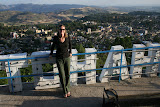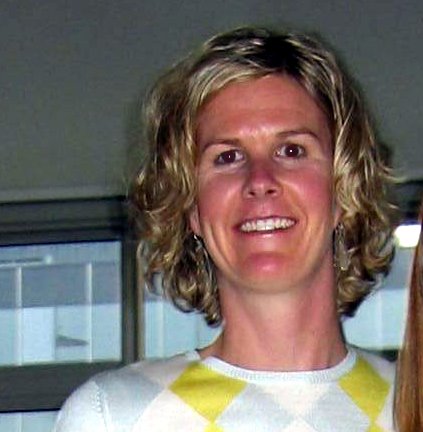Beautiful Ethiopia
 In writing about the American southwest, Edward Abbey wrote: “This must be the most beautiful place on earth. There are many such places. Every man, every woman, carries in heart and mind the image of the ideal place, the right place, the one true home, known or unknown, actual or visionary.”
In writing about the American southwest, Edward Abbey wrote: “This must be the most beautiful place on earth. There are many such places. Every man, every woman, carries in heart and mind the image of the ideal place, the right place, the one true home, known or unknown, actual or visionary.” Ethiopia. I found many such beautiful and mystical places while there, in between stops at churches, monasteries and mosques.
At Bahir Dar, we hiked one morning to the Blue Nile Falls, flowing out of Lake Tana, which ushers forth the journey of the Blue Nile into Sudan where it meets the White Nile. Lake Tana, the largest lake in Ethiopia, has 37 islands, 30 of which contain large round churches and monasteries, each with a conical thatched roof, on top of which sits an intricate gold or bronze 7-pronged cross with 7 ostrich eggs placed on the prongs, to symbolize care for the church. These churches date from the 16th – 18th C A.D. The beautifully painted murals inside the churches have been well-preserved and tell Biblical stories, meant as a way to teach the illiterate. The figures have wide circular faces and huge dark eyes – a style I had seen in museums before, and considered cartoonish. Now being in Ethiopia, I see how true to life these figures have been painted – Ethiopians really do have huge, beautiful, bright, dark eyes.
 Driving from Bahir Dar to Gondar and then from Gondar to the Simien Mountains, we passed through fields and fields of teff, a yellow, light and wispy grain. Ethiopians use teff to make their main staple food, the sponge-like injera bread eaten at almost every meal, used to scope up tibs of mutton or pork, usually cooked spicy with peppers and onions; or shiro, the red paste made with chili and peas that became my favorite; or an assortment of steamed vegetables, cabbage, carrots, beets. The rainy season had just ended when I arrived, so the fields were patchworks of bright yellows and greens. As we drove along, I noticed children standing on the tops of trees in the fields. They stand there from sunup to sundown, with sling shots, to shoot at the birds that land in their fields. That seems like some grueling work!
Driving from Bahir Dar to Gondar and then from Gondar to the Simien Mountains, we passed through fields and fields of teff, a yellow, light and wispy grain. Ethiopians use teff to make their main staple food, the sponge-like injera bread eaten at almost every meal, used to scope up tibs of mutton or pork, usually cooked spicy with peppers and onions; or shiro, the red paste made with chili and peas that became my favorite; or an assortment of steamed vegetables, cabbage, carrots, beets. The rainy season had just ended when I arrived, so the fields were patchworks of bright yellows and greens. As we drove along, I noticed children standing on the tops of trees in the fields. They stand there from sunup to sundown, with sling shots, to shoot at the birds that land in their fields. That seems like some grueling work! Driving has become one of my favorite activities in Africa, to see so much beauty and life along the road. While driving to the Simien Mountains, we saw villagers carrying a sick person, stretcher-like, over their heads; a funeral procession, with the men walking first and carrying the body and the women following behind, all while wailing loudly; two women dragging a large, freshly-killed goat down the road; men dressed in robin hood green holding long staffs while walking their goats or cattle on the side of the road; and children idling around and appearing to watch over fields or herds. No, you can never be bored while driving in Africa.
Driving has become one of my favorite activities in Africa, to see so much beauty and life along the road. While driving to the Simien Mountains, we saw villagers carrying a sick person, stretcher-like, over their heads; a funeral procession, with the men walking first and carrying the body and the women following behind, all while wailing loudly; two women dragging a large, freshly-killed goat down the road; men dressed in robin hood green holding long staffs while walking their goats or cattle on the side of the road; and children idling around and appearing to watch over fields or herds. No, you can never be bored while driving in Africa.Then we hit the Simien Mountains and a marvelous landscape opened up immediately before me. I looked across a huge gorge full of amethyst peaks and stupendous crags. The clouds formed shadows darkening, while around the corner the sunlight lightened, the many colors of the Simiens, ruby, sapphire, emerald. The formations seem alive, constantly changing color and shape with the shifting clouds and light of day. The Simien Mountain National Park is one of the most beautiful and peaceful places on Earth. Its many summits are hard cores of volcanic outlets from which the surrounding material eroded away. The highest summit, Ras Dashen, rises to 4,543 meters and is the fourth highest peak in Africa.

We walked for one full afternoon and the entire of the next morning. It was just me; my guide from Gondar, a young man called Gech; a local woman guide, named Ababa dressed to the nines; and a scout, named Mohammed, who carried an old British rifle that did not appear to work, but it made me feel safe nonetheless (although never quite certain “from what”). We mostly walked in silence for hours. You could tell how much they all loved this land, but especially Mohammed who had grown up living in the Simien Mountains. He looked out across the gorge as if looking at a lost lover. I always wondered what he must be thinking. We stopped at times and just sat, watching an eagle for a half hour, circle over our heads. We stopped at the end of the walk on our first day to rest, and all four of us laid down in the grass on our backs, looking up at the shifting clouds. Again, completely silent, but connected by what, I believe, we all felt being in the Simiens, something spiritual, peaceful, beautiful.
(Pictured: Me at the Blue Nile Falls; Ura Kidane Monastery on an island in Lake Tana; From Hotel in Gondar, fields of teff in the background beyond the city; boy in a tree guarding his field from birds)



<< Home